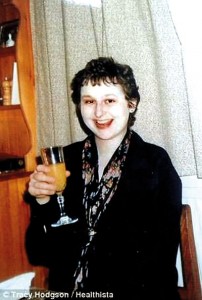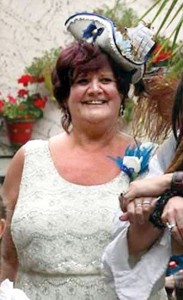What is lupus?

Raising awareness: Selena Gomez, who has lupus, has been a vocal advocate for sufferers
May 10 was World Lupus Day – a global call-to-action on behalf of the millions of people affected by lupus.
Imagine a disease that is so unpredictable that it can affect the entire body without ever being diagnosed, confusing doctors and sufferers alike.
That’s lupus.
But while, staggeringly 90 percent of sufferers are women, few of us know what it is, or have even heard of it.
Indeed, Selena Gomez, 25-year-old pop star, ended her world tour early in August to recover from lupus-related panic attacks and depression.
In the hours after, Google trends saw more than a 1,000 percent spike in searches for ‘what is lupus?’
A global survey by pharmaceutical company GSK this year also found that 26 percent of people across 16 countries did not know lupus is a disease, and over half did not know that lupus can result in serious health complications.
So, what is lupus?
It is an illness in which the immune system produces too many antibodies which causes reactions leading to inflammation of parts of the body, skin, or organs.

Amy Baker, 24, was diagnosed nine years ago, as her whole-body itching got worse and worse
Despite lupus being triggered by genetic or possibly environmental factors, the GSK survey also found that 41 percent of people feel less than ‘comfortable’ shaking hands with someone with lupus, indicating they believe it is infectious.
The disease, says the charity Lupus UK is complex and deceiving and otherwise known as the ‘invisible disease’, because it works in flares and periods of remission.
The symptoms differ from person to person, from mild to life-threatening, but the main symptoms are painful and swollen joints, fever, hair loss, severe fatigue, and a skin rash. But in short, it affects the body on a large scale.
There is no cure for lupus, but it doesn’t affect life expectancy. Medication can be used to control the symptoms, typically steroids, immune suppressants, antimalarials, or even in some cases such as Selena Gomez, chemotherapy.
But these offset an array of complications themselves, such as weigh-gain with steroids, bone thinning, or stomach weakening.
For Lupus Awareness Month, Healthista spoke to three women who live with lupus.
Sue Hayes, 67, lives in Surrey with her husband Mick. They have two grown children, Matt and Nicola

Lupus gave Tracy extreme anemia
“At the age of 38, I had to say goodbye to my children, after the doctor held my hand as he told my husband Mick and I that I had 24 hours to live.
Lupus had overtaken every organ in my body, my skin, and my blood. Doctors had misdiagnosed my illness for years, and one even wrote ‘hypochondriac’ on my medical notes.
I actually doubted myself, was I making everything up? But that’s the thing with lupus, it masks itself. It’s called the great deceiver because it doesn’t always show.
It took years of being unwell to finally be diagnosed with the worst case of lupus my doctors had ever seen, despite not really knowing anything about it.
I had had 10 miscarriages between my children, who, would regularly find me passed out on the kitchen floor, the colour of paper.
They initially thought it was leukaemia, meningitis, pneumonia, internal bleeding, and kidney and liver problems.
I was even close to being put on the kidney transplant list. It was actually a trainee doctor who suggested it could be lupus.
The doctor laughed and said, ‘I’ve never seen a case of that in my life, and I doubt you will’. But after doing the lupus test, after around 180 blood tests, it came back as positive.
On death’s door, the doctor told us he wanted to give me a huge overdose of steroids, to ‘break the lupus up like an atomic explosion’.
He said it could kill me, but it worked.

Sue Hayes, 67, was told she would die at 38
Amy Baker, 24, is studying interior design in London and volunteers for Lupus UK. She has a pen-pal system with other young lupus sufferers, and finds social media helpful to interact with others, under hashtags such as #spoonie.
“I can’t live like a normal 24-year-old. I want to be throwing myself into university, going out and socialising, going to clubs and doing everything. But it’s just impossible.
I was diagnosed at 15 years old, two weeks before my GCSE exams.
My grandmother noticed I had chilblains on my feet, which are like red sores, when I was 12, and then I began getting problems with my eyes and lips.
They would swell to four times the size and be so itchy, as well as my stomach, arms and legs. It didn’t really affect me at school, but at the age of A-levels, things got worse.
The fatigue is not the type everyone else has. It’s like a really bad hangover with flu but all the time.
I have this along with pain through my nerves, called nerve burn, hair loss, and regular urine infections.
I take stomach protectors just because of the amount of medication I’m on, the steroids, anti-malarials, ant-histamine, sleeping pills, and so many more.
I didn’t work for two years before I came to university, I wasn’t able to. I got to the point I was severely depressed. I was stuck in limbo trying to get into work and it wasn’t working.
Before I went to university, I attempted a retail job, a teaching assistant, a jewellery shop assistant, and a coffee barista, all which I couldn’t last more than three weeks at. I had to move back in with my mum, my friends were all busy living their lives, and I was so lonely.
Things have improved a lot since then. I accepted that I have a disability, and this opened a lot of doors to support.
Tracy Hodgson, 42, works for Hampshire County Council. She is a proud auntie and Brownie leader
I was running the checkout line in Waitrose as a trainee manager, aged 21, when I had a phone call patched through to me from my GP.
I’d been unwell for about six months, and eventually had a blood test. The doctor couldn’t believe I was working, or driving for that matter, and told me to come to hospital.
I was admitted that day with severe anaemia, and the hospital started me on blood transfusions immediately.
I’d had an array of odd symptoms which I had written off as being run-down. My joints were stiff and painful and I was struggling with things like getting out of the bath, dressing and brushing my hair.
Work was taking every ounce of my energy, I’d fall asleep in my uniform exhausted as soon as I got home. My hair was falling out and I’d lost a lot of weight from lack of appetite.
After looking for the cause of the anaemia, my parents and I were told I had lupus. I had no idea what it was, but felt huge relief to have a diagnosis and that it wasn’t leukaemia, as I had heard doctors discussing.
It can often take seven years for lupus to be discovered. As soon as I was diagnosed things made more sense.
As a young child, my mum dressed me in a t-shirt over my swimming costume on holiday, because I would react so badly to the sun. Actually, these symptoms put together with hair loss, painful stiff joints, and extreme fatigue, was my lupus.
I was determined to continue my trainee programme with Waitrose after my diagnosis.
I persevered and after 10 years and successfully becoming an Office and Administration Manager. I chose to leave to start a 9-5 job to put my health first.
Now, 22 years after my diagnosis, I am a long way into my ‘lupus journey’, as you might call it.
I have now been on daily steroids over half my life, along with 10 other medications a day. Long term steroid use has thinned my bones in my hip, spine and feet giving me osteopenia.
I can now only wear hospital issue orthopedic footwear, as I’ve had about a dozen stress fractures and three major fractures in my feet from simple injuries.
One of the frustrating elements of lupus is the change it can make to your appearance with skin rashes, hair loss, weight gain and ‘moon face’ from the steroids.
Being on steroids for so long has made me gain weight but I don’t stress about this as I am so grateful to feel in better health.
I swim regularly which is a great way to relax and helps me to manage my weight.
I have to be very organised attending regular hospital appointments for monitoring. I don’t want lupus to define me, I want it to be what I have achieved in life. There is most definitely life with lupus, life is what you make it.
(C) Daily Mail London


